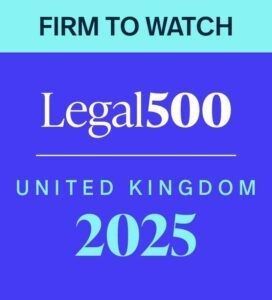Uber and Employment Status
Uber and Employment Status

Background
The recent Uber decision provides further guidance from the Supreme Court on the ever difficult issue of ‘employment status’.
The case looked at whether the Uber drivers bringing the claims were “workers” or, as Uber alleged, “self-employed” consultants.
Employment Status
When considering what status someone has, there can be considerable difficulty in determining which category someone falls into. For employment purposes, there are three main categories that apply (please note for tax purposes there are only two):
1. Employees
2. Workers
3. Self-employed
Those who are self-employed do not enjoy employment rights to the same extent that employees do. Employees enjoy maximum protection, including the right to claim unfair dismissal. Anyone who has been a party to a settlement agreement will be aware of the long list of potential claims that employees have; typically added as a two or three page schedule to the end of such agreements.
Workers sit between those who are self-employed and employed. They generally have more freedom/less control around how and when they work compared to employees. The main rights that workers benefit from, that those who are self-employed do not, are the right to be paid the minimum wage, rights under the Working Time Regulations for paid annual leave and whistleblowing protection, which were all under consideration in the Uber case.
The cases that have considered employment status generally end up looking at issues around control, risk and flexibility. The greater the flexibility an individual has, the more risk they take and the more freedom they have regarding the work they perform the more likely they will be self-employed and less likely they will be employed or a worker.
The Uber case now gives additional guidance on how to interpret and determine an individual‘s status so as to try and decide whether they are self-employed, workers (so entitled to holiday pay the minimum wage etc) or employees.
Uber case
On the one hand, Uber drivers had a lot of flexibility. They “...had a substantial measure of autonomy and independence. In particular, they were free to choose when, how much and where (within the territory covered by their private hire vehicle license) to work.”
Further, Uber drivers were free to work for other such providers. The drivers also had to provide and pay for their own vehicles and bear all the cost of running their vehicles, including fuel, insurance, road tax and obtaining their private hire vehicle licence.
When working for Uber they simply had to log onto the Uber app, which they could do as often or as little as they wanted.
In many sectors, such risk and freedom would normally denote that an individual is self-employed and not a worker or employee. However, the Uber case was slightly more complicated given the rules governing private hire vehicles and how they need to operate. Much of a case centred on the contractual arrangements between Uber BV (that owned the app), Uber London that contracted with the Uber drivers to work in that area and the passengers (or users).
Given the way in which arrangements were made between Uber BV, Uber London, the drivers and passengers, the court unanimously found that, largely owing to 5 main aspects, the drivers in the claim were workers and not self-employed.
- Firstly, the amount of remuneration paid to the drivers was fixed by Uber and the drivers had no say in it. Uber also set its own “service fee”, which was deducted from the fare paid to the drivers.
- Secondly, the contractual terms under which the drivers performed their services were dictated by Uber. The drivers were required to accept Uber’s standard form of written agreement and the terms of which they transport passengers were imposed by Uber on the drivers who had no say in them.
- Thirdly, while the drivers had choice as to when and where they worked, once a driver had logged onto the Uber app, Uber applied constraints on the driver’s choice about whether to accept requests from passengers. This was done partly by controlling the amount of information provided to the driver and that the driver was obliged to complete the journey but only informed of the destination once the passenger was picked up. Further controls exercised by Uber included monitoring the rate of trips that were offered to the driver. If too many trips were refused by the driver, when logged onto the app, they would be subjected to a penalty by Uber and shut out from using the app for 10 minutes.
- Fourthly, Uber exerted control over the way in which the drivers delivered their services. While the drivers were free to provide their own cars, Uber vetted the type of vehicle that could be used and the technology, which was integral to the service, was wholly owned and controlled by Uber. This included further control by using ratings given by passengers about the driver which could, ultimately, result in the termination of the driver’s relationship with Uber. The court found Uber was, therefore, using the rating system as an internal tool for managing performance and as a basis for making termination decisions.
- Fifthly, there was further evidence of control whereby Uber restricted communication between the passenger and driver to the absolute minimum. Uber went to lengths to prevent drivers from establishing any relationship with passengers. Included in this was a prohibition on the drivers in exchanging contact details with passengers and an electronic document, called an invoice, was issued from the driver to the passenger, but never sent to the passenger and, while available for the driver, it only recorded the passenger’s first name and no further detail.
Taking all of the factors into consideration the court upheld the Employment Tribunal‘s decision that Uber very tightly controlled how the services were performed. It found this was done so was to provide a standardised service to passengers in which drivers are perceived to be interchangeable and from which Uber, rather than the drivers, obtained the benefit of customer loyalty and goodwill. This meant the drivers had an inability to offer a distinctive service meaning they had no ability to improve their economic position unless they simply worked more hours.
Implications for Uber
The court went on to consider the implication of its decision that the drivers in the case were ‘workers’. It again supported the Employment Tribunal’s finding that the drivers were working, for the purposes of calculating their pay under the National Minimum Wage Act, from the moment they switched on the app and were available to work.
Uber counter-argued strongly on the basis that the drivers could work for other such providers at the same time, but the court, looking at it practically, concluded that the reality was that given Uber’s market share in London there were no other providers that the Uber drivers could contract with and this was, therefore, merely a theoretical argument on Uber’s part.
The decision means that, as workers, Uber drivers are now entitled to claim the National Minimum Wage (based on when they were available for work, not just when carrying passengers) and holiday pay. Unless Uber has since changed how it operated (the case reflected the position in 2016), then its current drivers will also be workers and entitled to these rights.
While we don’t know how many individuals were involved in the claim, in 2016 there were some 40,000 Uber drivers in London (serving some two million people), so potentially the liability will be significant for historical claims but also for the future ongoing liability as a result of this decision.
Summary
As is often the way when considering employment status “control” is a key factor, as it was in the Uber case.
Simply put, the more control a business exercises over someone, the more likely they will be a worker or an employee.
The case is very timely with the introduction of IR35 which further seeks to categorise self-employed people as employees, albeit for tax purposes.
The court was also at pains to express that the National Minimum Wage and Working Time Regulations are there to protect those who are most vulnerable and will be applied regardless of whatever contract is entered into.
While the decision will be expensive for Uber, it does help clarify employment status and gives us further guidance and considerations that can be applied when considering this, often difficult, question.
If you would like any further information or want to discuss any of these issues then please contact the writer, Matthew Kilgannon, via mk@kilgannonlaw.co.uk or on 01483 388 900.
Kilgannon & Partners LLP is a specialist employment law firm where our experienced employment law partners offer practical, prompt and professional employment law and HR advice.
12th March 2021. © Kilgannon & Partners LLP











